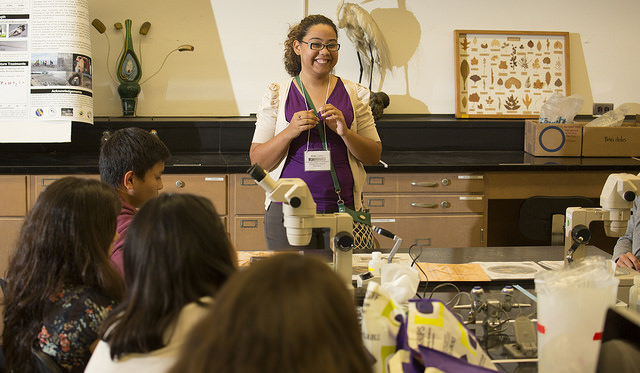Students “thrive in environments that allow them to experience and interact with the curriculum, to take part in their own learning and to relate what is learned to experience” (Dewey, 1916 as cited in Crumly, 2014, p. 7). Active learning – a student centered approach that incorporates multiple ways to learn and to demonstrate knowledge, leads to improved student participation, which in turn results in improved retention of material and better overall student experience (Crumly, 2014).
When student participation is lacking common causes tend to be content related, such as students perceive the material to be repetitive, too hard, overwhelming or not relevant. A Just-in-Time Teaching (JiTT) approach takes these factors into consideration, relying on continuous feedback to adjust content delivery methods and incorporating active learning techniques. At Wentworth, faculty have many tools and resources available to collect feedback before, during and after class.
Before Class
Students are less likely to feel overwhelmed by in-class activities if they are prepared. Although readings are commonly assigned as class preparation, there is no guarantee that students will complete them prior to class. The following selected tips may help assure that students complete assigned work prior to class and provide valuable feedback and assessment to faculty.
Use Blackboard to :
- Test prior knowledge
- Assign reflection papers to identify bias or misconceptions
- Post readings
- Test comprehension of material from readings
- Provide an overview of the upcoming class, expectations and learning outcomes
During Class
When students are bored or overwhelmed by content, they are less likely to ask questions or engage in activities. To collect student feedback and to encourage participation during class, faculty may:
- Utilize back channels, such as Backchannel Chat
- Meet students in their space, such as on Twitter (see post on using Twitter for teaching)
- Use polling tools, such as i>Clickers, PollEverywhere and ECHO360/ALP to assess comprehension of material
- Incorporate a variety of active learning techniques, such as discussion, problem solving, writing, role-playing, case studies, group projects and critiques, think-pair-share, peer teaching, debates, demos, self guided exploration, experimentation and more.
After Class
Some students may require more time to process material presented during class. Faculty can easily record live lectures with ECHO360/ALP or Kaltura and post recordings in Blackboard for later review.
Application of theoretical knowledge helps make education real and relevant. After class activities, such real-live projects, or cases, self-study/research, team work/collaboration, and peer-assessment are great ways to engage students that also make learning real and relevant. Use Blackboard to assign after-class activities, collect papers (anti-plagiarism tools are available), and facilitate collaboration with GoToMeeting, online discussions, wikis and more.
Resources:
Brame, C. Just-in-Time Teaching (JiTT).
Brown University The Harriet W. Sheridan Center to Teaching and Learning. Interactive Classroom Activities
Crumly, C. (2014). Pedagogies for student-centered learning: online and on-ground.
Augsburg Fortress Publishers.
